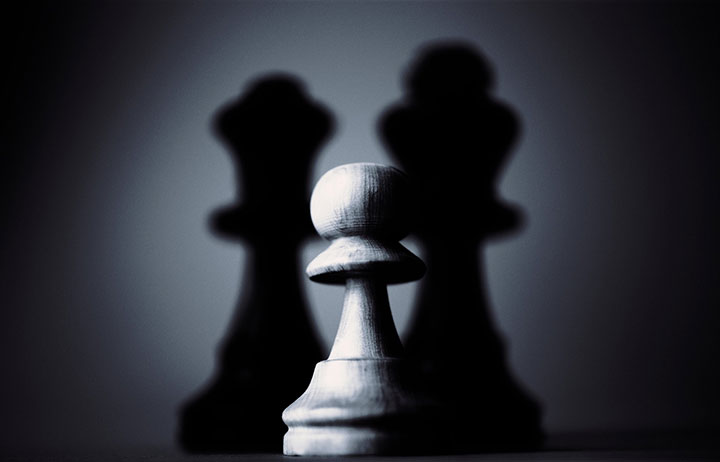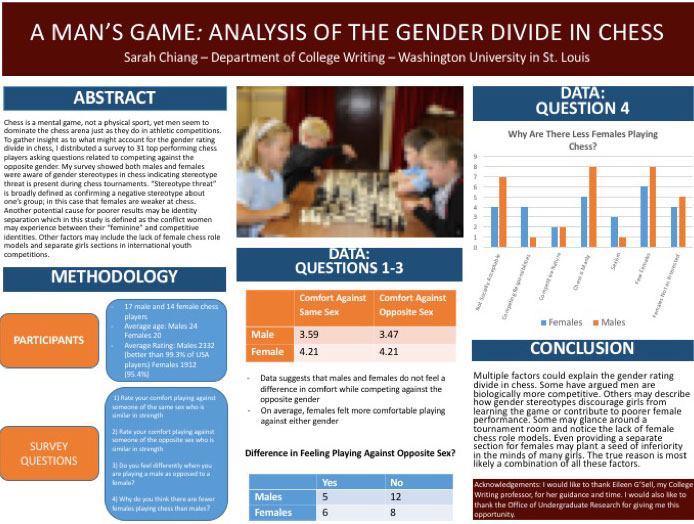Did it hurt Yu's U.S. Junior performance?
In my first article about the 2019 U.S. Junior Championship, I speculated that “stereotype threat,” combined with being the “wildcard invite,” may have negatively affected Jennifer Yu’s performance. Among those who responded was New York University Professor of Neuroscience and Psychology Wei Ji Ma who has also written about women in chess. Dr. Ma tweeted about my article and put me in touch with an expert on gender stereotyping, Dr. Andrei Cimpian.
On August 8, I interviewed Dr. Cimpian by phone. His responses are not an evaluation of Jennifer Yu’s performance at the U.S. Junior Championship but do provide insight into stereotype threat in chess.

Alexey Root: What stereotypes exist about girls and women in chess?
Dr. Andrei Cimpian: Chess is not typically associated with women. The interpretation is often, when there are not many women in a field, that means that women just aren’t as good as men in that field.
AR: What is your definition of the psychological theory of “stereotype threat”?
AC: When one becomes aware of the stereotypes associated with one’s identity in a particular context and worries about others’ judgments based on those stereotypes, then that worry takes up cognitive resources that could be used for the task at hand.
AR: Does stereotype threat apply to the performances of girls and women in chess tournaments? Are the girls’/women’s performances when playing against boys/men better or worse (or the same) as might be predicted by their ratings?
AC: It depends on the situation. Sometimes the worry that others will judge you in light of a stereotype impairs your ability to do something cognitively taxing, like finding the best moves in a chess game. However, under certain circumstances, being reminded of stereotypes might be motivating—it might make people want to prove the stereotypes wrong, which sometimes increases their performance. For example, women who were told that women had done poorly on a negotiation task in the past ended up doing somewhat better than men at that task. There is some evidence of this sort of pushback or “reactance” effect in chess as well.
AR: How are the male opponents of the girls/women affected by chess stereotypes?
AC: Some work (not in chess) has suggested a “stereotype lift” effect. For example, men sometimes do better in math when they’re reminded of the negative stereotypes about women’s math abilities. This effect may apply to chess too, but that’s a little hard to square with the evidence that women do better than you would expect based on their ranking when playing against men.
AR: What other insights might help me, and ChessBase readers, understand or counteract stereotype threat in chess?
AC: There was a huge boost in the number of women who earned chairs in top-tier orchestras when blind auditions became the norm. Playing online, where players can be blind to the genders of their opponents, might be a way to counteract stereotype threat.
At in-person chess tournaments, an Open section at the same time and location as a Women’s section, as mentioned by Sarah Chiang in her account of the 2012 Pan American Youth Festival, may highlight the stereotypes and under-representation cues for women that choose to play in the Open rather than in the Women’s.
More generally, organizers could try to minimize the cues that prompt women to experience stereotype threat — the cues that make women feel that they are not a valued part of the chess community. Nothing says you don’t belong like, say, having to walk three floors down from the playing hall to go to the bathroom.
It was remarkable that Dr. Cimpian mentioned restrooms. I have played in many tournaments and clubs where the only restroom near the chess boards was designated for men. At some tournaments and clubs, the organizers would ask the men to vacate that multi-stall restroom, if I told the organizers each time I needed to use the restroom; or I could walk to another restroom, five minutes or more away, which was for women only. At other chess clubs, there was only a single, one-stall restroom, sometimes with a broken door lock. That restroom situation was one part of chess that made me feel unwelcome. When I wrote about my perception of the restroom situation in 2001, I was vilified. Restrooms are part of the structure of a chess club or tournament and can be a cue to girls and women about whether they are welcomed as chess players. And restrooms are something that organizers could fix, perhaps more easily than getting rid of the degrading comments that Sarah Chiang recounts experiencing.
Sarah Chiang
WFM Sarah Chiang played in the U.S. Junior Championship in 2013. The only girl in the field that year, she scored ½ out of 9. Later, when an undergraduate at Washington University in St. Louis, Chiang researched the gender divide in chess (see PDF). A research paper, written in 2015 for a college class, ended with “ignoring stereotype threat is difficult; I can attest to that. But whether we choose to allow negative environmental factors [to] influence us is partially under our control.”

Chiang believes that running open sections alongside sections for girls (or women) may increase stereotype threat. Chiang played in the 2012 Pan American Youth Festival, where 62 boys and Chiang played in the Open Under 16. She could have chosen to play in the concurrent Girls Under 16 instead. In a 2015 personal essay for a college course, Chiang reflected on that 2012 tournament:
For eight years, I had been playing with boys and men alike and no one seemed to notice. But take a major tournament and segregate girls into their own section, and all of a sudden I’m some unusual specimen. Usually, I took pride in being one of the handful of females battling over a chess board. But I wasn’t naïve. People have long asked me, ‘Do you know how to play?’ or ‘You’re playing in that section?’ or ‘You’re a master??’ Usually, I stashed those comments in my bag of funny stories. But this tournament was different. I had never been doused with so many degrading comments, and it was difficult to prevent them from seeping in.
Currently taking a gap year, Chiang is a research technician in the Patti lab at Washington University in St. Louis and will apply to medical schools. In Chiang’s email to me, she added:
While I believe having a separate section for girls may increase stereotype threat, I don’t believe that having a separate section for girls is bad. I recognize that encouraging girls to participate through separate sections is important and has greatly increased female interest and participation in chess. I, personally, have benefited greatly from participating in high-profile female tournaments.
Annie Wang
On August 6th, 2019, FM (and WGM) Annie Wang took first in the Open Under 20 at the Pan American Youth Chess Championship (Campeonato Panamericano de Ajedrez Sub-20 Absoluto), which also had Girls Under 20. Wang had started the tournament as the fourth-highest rated player. Wang earned a direct IM title and a GM norm for her first-place finish. Unlike Chiang in the Open Under 16 at the 2012 Pan American Youth Festival, Wang was not the only girl in the Open Under 20. WIM Mitzy Mishell Caballero Quijano also competed in the Open Under 20, starting as the 27th-ranked player and finishing 26th out of 51. Two female players and 49 male players in an Open is “normal” ratio for a chess tournament and thus may have blunted the under-representation cues.
Final thoughts
In our phone interview, Dr. Cimpian said, “The negative stereotypes about women in chess are a distracting burden for women, whether or not their performance in particular chess games is affected. And those stereotypes are a burden that chess-playing men do not have to bear.”
A second part to follow will discuss second-half “comebacks” with Dr. Kenneth Regan as well as an interview with Yu herself.

























